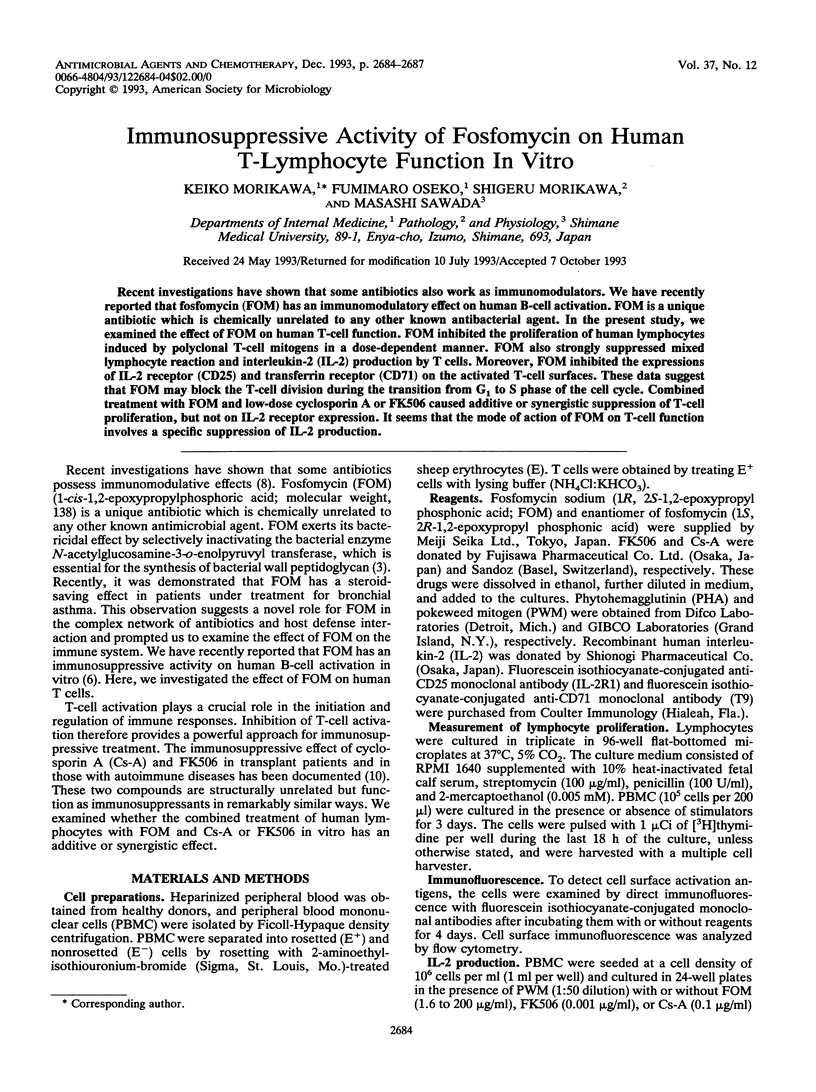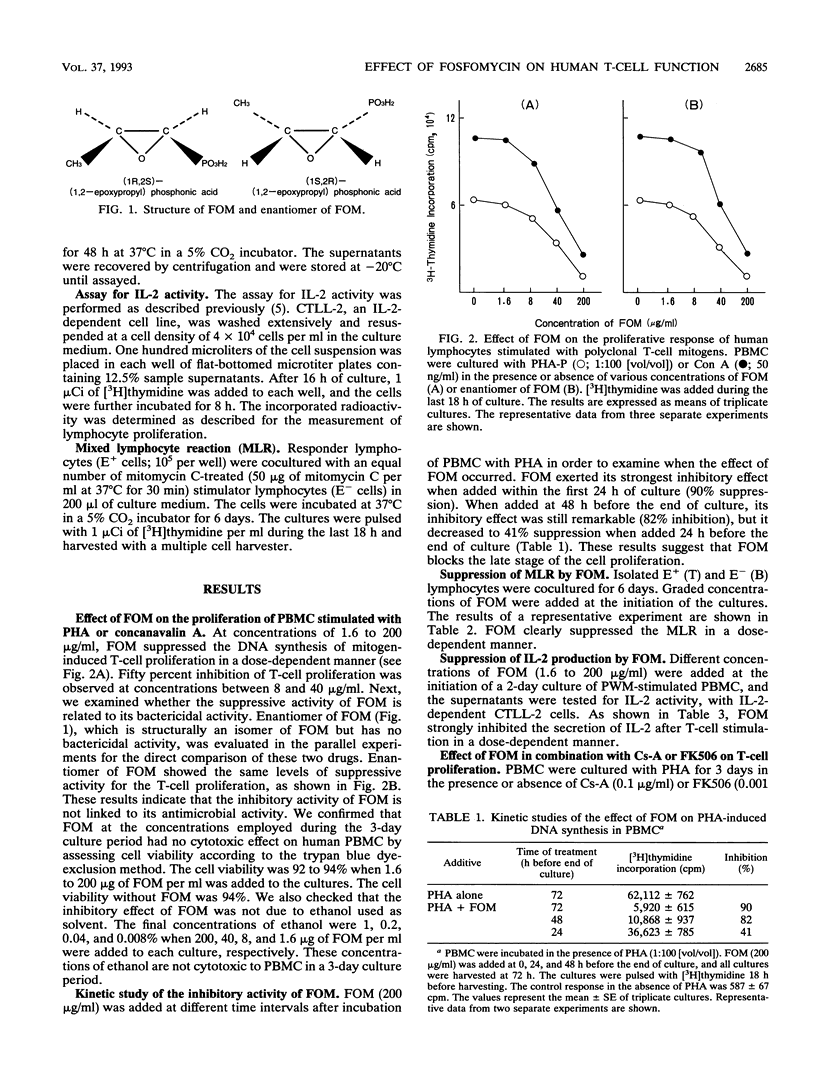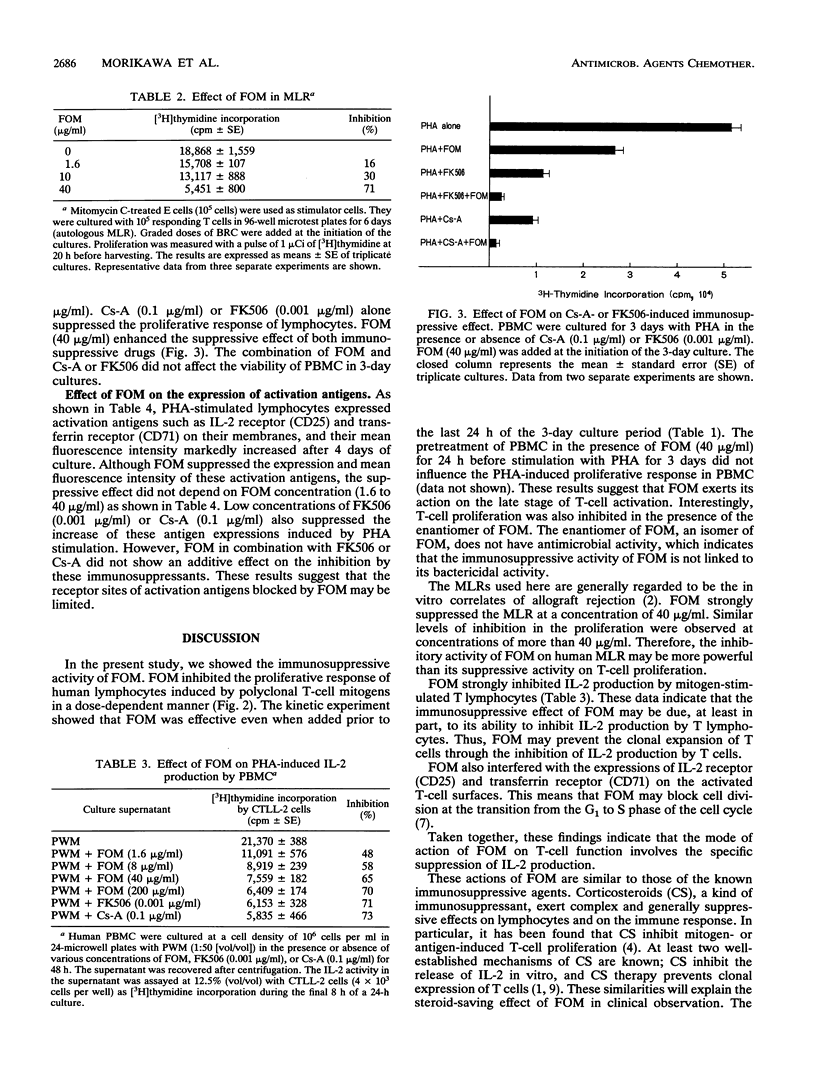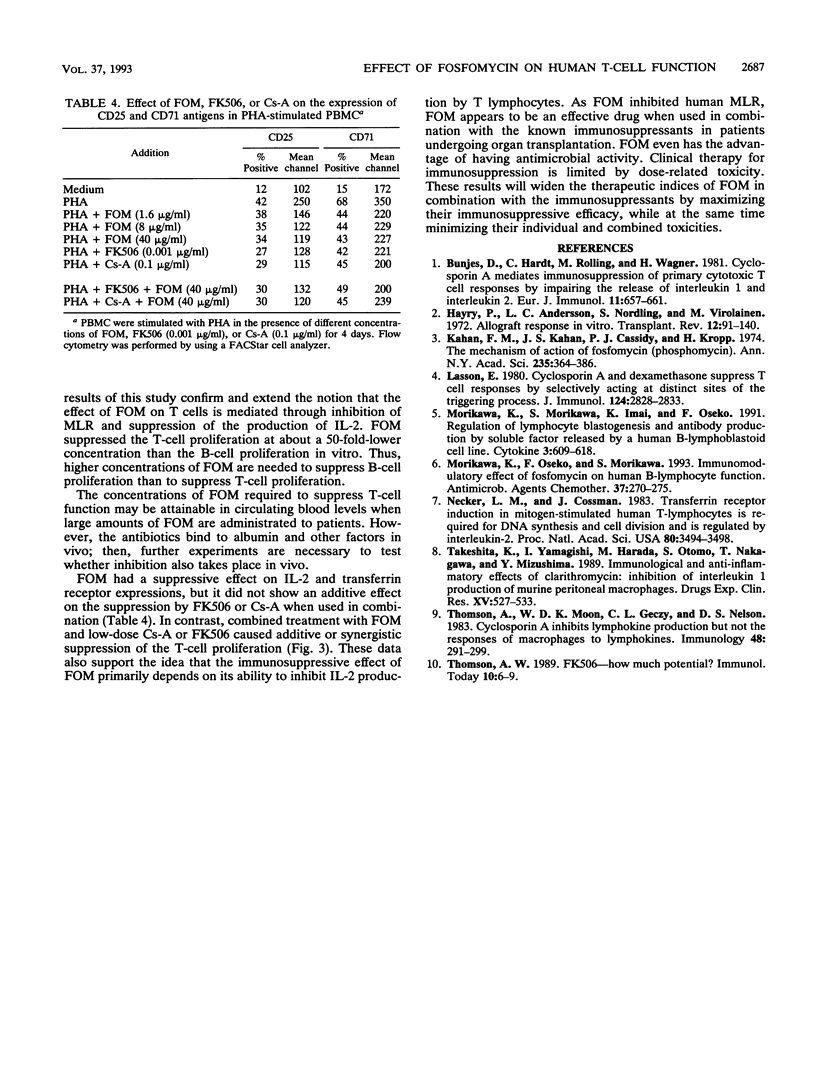Abstract
Recent investigations have shown that some antibiotics also work as immunomodulators. We have recently reported that fosfomycin (FOM) has an immunomodulatory effect on human B-cell activation. FOM is a unique antibiotic which is chemically unrelated to any other known antibacterial agent. In the present study, we examined the effect of FOM on human T-cell function. FOM inhibited the proliferation of human lymphocytes induced by polyclonal T-cell mitogens in a dose-dependent manner. FOM also strongly suppressed mixed lymphocyte reaction and interleukin-2 (IL-2) production by T cells. Moreover, FOM inhibited the expressions of IL-2 receptor (CD25) and transferrin receptor (CD71) on the activated T-cell surfaces. These data suggest that FOM may block the T-cell division during the transition from G1 to S phase of the cell cycle. Combined treatment with FOM and low-dose cyclosporin A or FK506 caused additive or synergistic suppression of T-cell proliferation, but not on IL-2 receptor expression. It seems that the mode of action of FOM on T-cell function involves a specific suppression of IL-2 production.
Full text
PDF



Selected References
These references are in PubMed. This may not be the complete list of references from this article.
- Bunjes D., Hardt C., Röllinghoff M., Wagner H. Cyclosporin A mediates immunosuppression of primary cytotoxic T cell responses by impairing the release of interleukin 1 and interleukin 2. Eur J Immunol. 1981 Aug;11(8):657–661. doi: 10.1002/eji.1830110812. [DOI] [PubMed] [Google Scholar]
- Häyry P., Andersson L. C., Nordling S., Virolainen M. Allograft response in vitro. Transplant Rev. 1972;12:91–140. doi: 10.1111/j.1600-065x.1972.tb00054.x. [DOI] [PubMed] [Google Scholar]
- Kahan F. M., Kahan J. S., Cassidy P. J., Kropp H. The mechanism of action of fosfomycin (phosphonomycin). Ann N Y Acad Sci. 1974 May 10;235(0):364–386. doi: 10.1111/j.1749-6632.1974.tb43277.x. [DOI] [PubMed] [Google Scholar]
- Larsson E. L. Cyclosporin A and dexamethasone suppress T cell responses by selectively acting at distinct sites of the triggering process. J Immunol. 1980 Jun;124(6):2828–2833. [PubMed] [Google Scholar]
- Morikawa K., Morikawa S., Imai K., Oseko F. Regulation of lymphocyte blastogenesis and antibody production by soluble factor released by a human B-lymphoblastoid cell line. Cytokine. 1991 Nov;3(6):609–610. doi: 10.1016/1043-4666(91)90488-y. [DOI] [PubMed] [Google Scholar]
- Morikawa K., Oseko F., Morikawa S. Immunomodulatory effect of fosfomycin on human B-lymphocyte function. Antimicrob Agents Chemother. 1993 Feb;37(2):270–275. doi: 10.1128/aac.37.2.270. [DOI] [PMC free article] [PubMed] [Google Scholar]
- Neckers L. M., Cossman J. Transferrin receptor induction in mitogen-stimulated human T lymphocytes is required for DNA synthesis and cell division and is regulated by interleukin 2. Proc Natl Acad Sci U S A. 1983 Jun;80(11):3494–3498. doi: 10.1073/pnas.80.11.3494. [DOI] [PMC free article] [PubMed] [Google Scholar]
- Takeshita K., Yamagishi I., Harada M., Otomo S., Nakagawa T., Mizushima Y. Immunological and anti-inflammatory effects of clarithromycin: inhibition of interleukin 1 production of murine peritoneal macrophages. Drugs Exp Clin Res. 1989;15(11-12):527–533. [PubMed] [Google Scholar]
- Thomson A. W. FK-506--how much potential? Immunol Today. 1989 Jan;10(1):6–9. doi: 10.1016/0167-5699(89)90057-1. [DOI] [PubMed] [Google Scholar]
- Thomson A. W., Moon D. K., Geczy C. L., Nelson D. S. Cyclosporin A inhibits lymphokine production but not the responses of macrophages to lymphokines. Immunology. 1983 Feb;48(2):291–299. [PMC free article] [PubMed] [Google Scholar]


